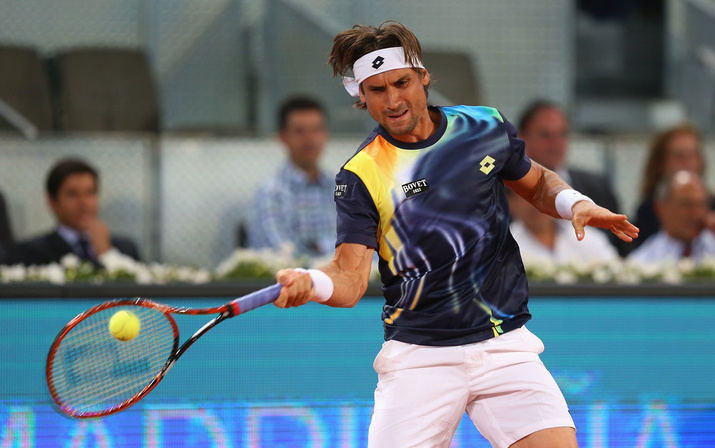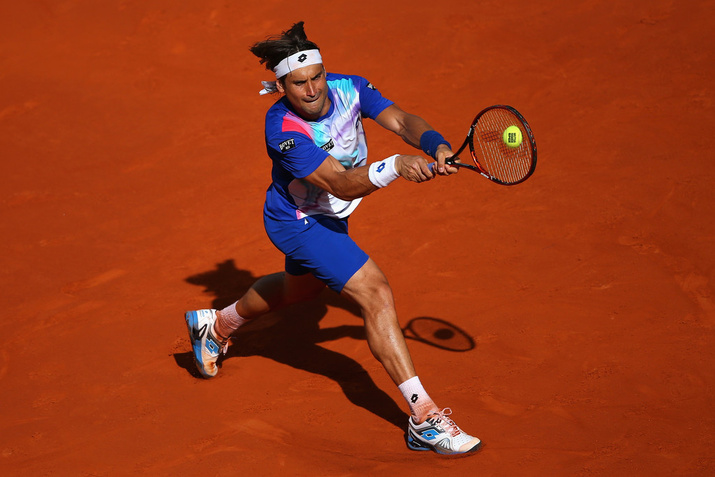Don't miss any stories → Follow Tennis View
FollowDavid Ferrer Looks to Pounce on Waning Chances
As any professional tennis player can attest, life on tour is not all glitz and glamor. It is also a grind. And for those players who have crossed into their 30s, that grind can feel even more cumbersome. Those veterans need deep runs to feed the hunger, maintain a respectable ranking, and stave off the pesky retirement questions that seem to increase with each loss. Without those stellar results, the temptation to hang up the racquet can become too much. David Ferrer appears to be approaching such a juncture in his career, which has left everyone, including the man himself, pondering how much longer he can keep competing on the ATP World Tour.

Former ATP pro and current tennis commentator Brad Gilbert made it clear that he foresees Ferrer destined for a downward trend. When asked about tennis players as stock options, he was adamant that when it came to Ferrer’s stock, it was time to “sell, sell, sell!” Perhaps not surprisingly, it would seem that Ferrer agrees with Gilbert. Earlier this year, the Spaniard alluded to the fact that age was starting to catch up with him. At 32, his window as a professional is closing.
But, while 2014 has not been a particularly memorable year thus far for Ferrer, the current landscape of the game, and his place within it, could yet translate into a lucrative season. Of course, how much of that comes to pass is dependent upon what Ferrer does in the coming weeks. Ferrer is currently ranked No. 5, which in many ways is crucial to his success and potential longevity on tour. It is a strong ranking that allows him to avoid meeting the biggest guns early, which theoretically provides him with an easier path to posting a deep run at any given tournament. Ferrer will have to successfully shoulder the pressure of defending his finalist points at Roland Garros if he wishes to maintain his current ranking and take advantage of these advantages, which might inspire Ferrer to hang around the game a little longer.
Ferrer also knows that there is a realistic chance of defending most, and possibly even all, of his finalist points in Paris. In contrast to previous years, there is no core group of players that is dominating the remainder of the field. Andy Murray has yet to hit his stride following his back surgery. Novak Djokovic has had his clay-court preparation interrupted by an arm injury, and Roger Federer has had his warm-ups cut short by the birth of his twin sons. Furthermore, with the absence of Djokovic in the bottom half of the draw in Madrid, Ferrer has an excellent look at building a small point cushion for himself heading into Roland Garros. That might allow him to swing a little freer when he reaches Paris.

A final positive for Ferrer is that he has proven to everyone, and most importantly to himself, that he still has the game to defeat the sport’s best. That is what made his victory over Rafael Nadal in Monte Carlo so important. It was not Nadal’s best performance, but Ferrer deserves some of the credit for taking his compatriot out of his comfort zone. He was able to pick on Nadal’s backhand, pull the trigger with his own backhand up the line, and executed his forehand drives with near-perfection at key moments. But perhaps the most impressive part of Ferrer’s win was that he managed to secure it despite relinquishing a lead on multiple occasions. Many times in the past, Ferrer has succumbed to these shifts in momentum, but not on that day. A victory over Nadal on clay is about as big as they come in tennis today, and it is that kind of victory that can give Ferrer confidence when he next finds himself in a tight match.
In the end, it is up to Ferrer to deliver. He must steel his nerves, grab his opportunities as they come, and take advantage where he can. He can still produce some scintillating tennis, and hopefully for the sport and the fans, he will. No one wants to see the man frequently referred to as “the bulldog” go out with a whimper.










